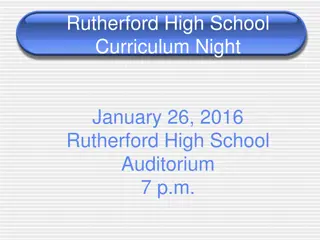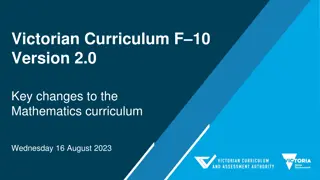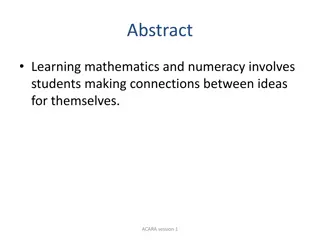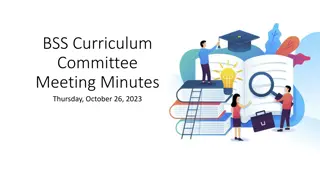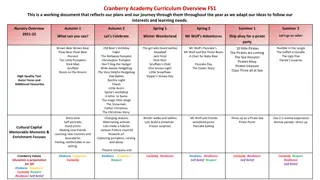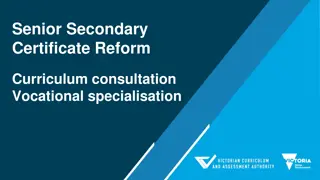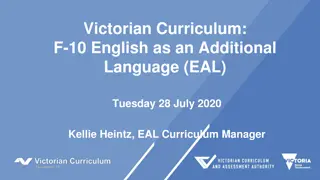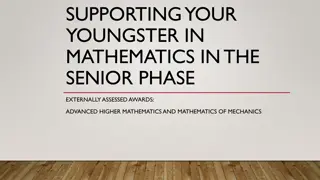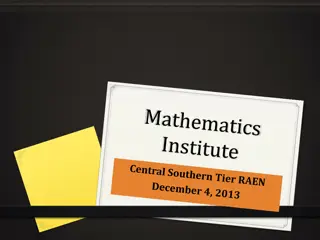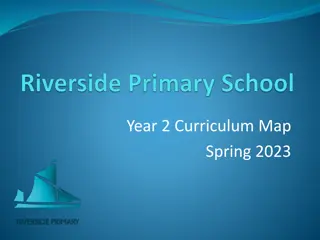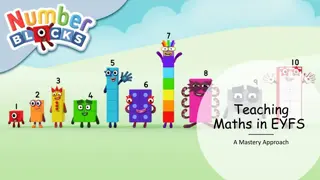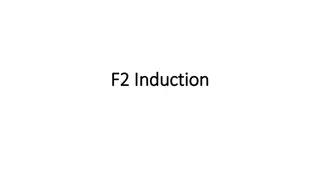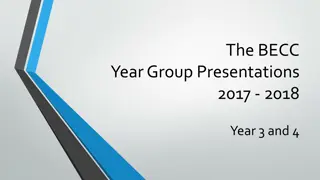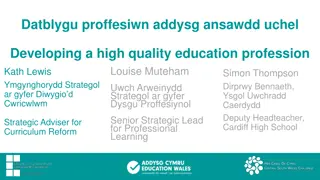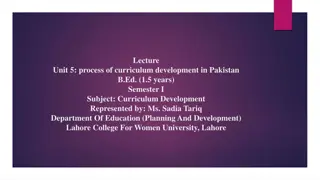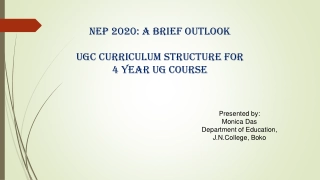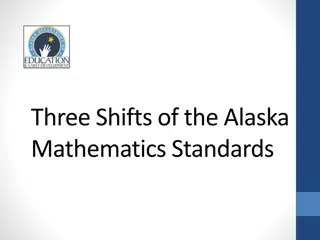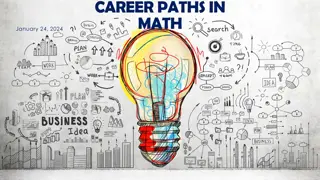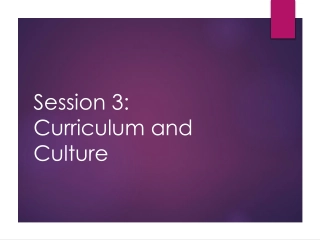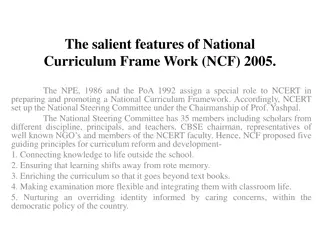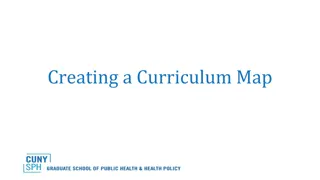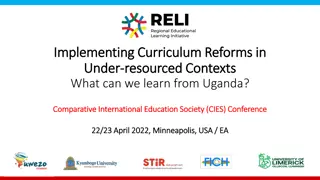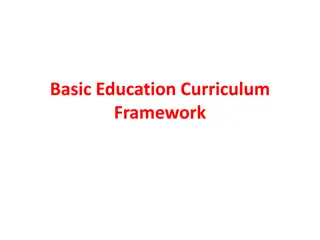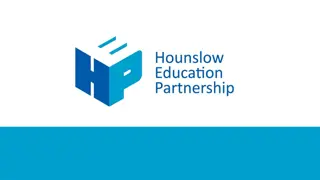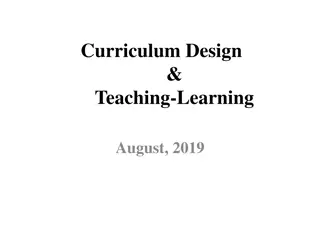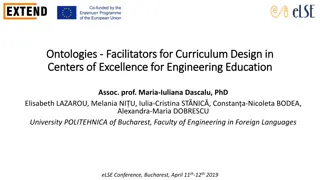Year 2 Mathematics Curriculum Overview
Year 2 Mathematics curriculum covers a range of topics including number bonds of 10 and 20, basic multiplication, division, fractions, time-telling, place value, addition and subtraction to 1000, measurement, money, problem-solving, data handling, and shape properties. Students learn through activities like using place value cards, learning the column method for addition and subtraction, recognizing fractions, estimating numbers, and exploring 2D and 3D shapes.
Download Presentation

Please find below an Image/Link to download the presentation.
The content on the website is provided AS IS for your information and personal use only. It may not be sold, licensed, or shared on other websites without obtaining consent from the author. Download presentation by click this link. If you encounter any issues during the download, it is possible that the publisher has removed the file from their server.
E N D
Presentation Transcript
What do we teach in Y2 Maths? Recapping on number bonds of 10 and 20 ( ie 8+2=10, 18+2= 20) this is then extended with larger numbers, (80 + 20 = 100 800 + 200 =1,000) Basic multiplication (fluent in 2s,5s and10s times tables, counting in 3s and 4s) including odds and evens Show how 5 times tables link to telling the time in intervals of 5 minutes Using the term multiples linked to doubling Basic division, halving understanding the link between multiplication and division (inverse) Recognising, finding and naming fractions1/3 2/4 and of a length, shape and number of objects counting in fractions Understanding equivalent fractions 2/4 Estimation of numbers of objects and length etc. Addition and subtraction to 100 (to 1,000 with more able children)
What do we teach in Y2 Maths? Use column method for addition and subtraction Place value (ones, tens and hundreds) Time- know o clock, half past, quarter to, quarter past, 5 minute intervals and be able to draw hands accurately on a clock face Measurement (weight, length, capacity) Money (everyday money- calculating change linked to number bonds) Problem solving word problems Using terms more than and less than Handling data ( graphing, tables, sorting data) Shape and space learning 2D and 3D shape properties faces, edges, vertices and to identify a line of symmetry Right angles and 90 turn as well as and turns
Resources Number line Number square Counters Place value cards Online games Multi-link cubes
Place Value W e use place value cards in combination with tens and ones not units equipment. 100 squares to recognise values of numbers. i.e. make the number 245 Step 1: partition the numbers 2 hundreds, 4 tens and 5 ones Step 2: make that number with either equipment or place value cards.
Addition and Subtraction with a number square Adding 12 54 +12= 66 Step 1 :Partition the number (one 10, two ones) 10 & 2 Step 2: add on the 10 ( down 10 to the now row in column) Step 3 add on the ones ( jump right 2) Adding 10 go down 10 in the column Subtracting 10 jump back 10 in column Adding 1 jump right 1 Subtracting 1 jump left 1
Column Method (new way!) Additionwithout carrying Addition withcarrying TO 1 8 TO 1 4 + 1 5 2 9 +1 5 3 3 1
Subtraction Lots of counting back in ones and tens from any number Knowing the number before and the number after Using a 100 square to jump back Use language appropriately less than, fewer, minus, subtract, take-away etc.
Subtracting 13 5 =8 Step 1 underline the first number and draw a magic line Step 2 write the first number on the right-hand side of the line and jump back in 1s the number that is being taken away (5) -5 Then count back 5 from 13 8 13 When the children are confident we move onto larger numbers 43 15 =28 -5 -10 Then count back 15 from 43 28 33 43
Subtraction new columnmethod Subtraction withoutcarrying Subtraction withcarrying TO TO 5 4 -1 2 4 2 4 1 5 4 -1 7 3 7
Using a number grid for patterns and multiplication Colours show odd and even numbers clearly Learn the 2, 5 and 10 x table Use the term multiple Numbersquare Ask children to say the next one in a sequence of numbers 4, 8,12 Hiding numbers on a number square
These are parts of a hundred square. Please fill in the missing squares. Now make up some of your own.
Early Multiplication First recognize that multiplication is repeated addition No of lots how many per group 3 x 5 Is the same as 3 lots of 5 or Use pictorial cues to represent a multiplication sum. Encourage them to write the sum: total 15 = 5 + 5 + 5 = 15 5 + 5 + 5 = 15
Multiplication in Y2 Moving on to larger numbers W e ensure that the children look at the number of 10s and ones TO 3 x 13 = 39 Circles are drawn and the appropriate number of 10s will be written into each set Then the ones are written into each set. The 10s will be added together and then the ones. 10 3 10 3 10 3 = 30 = 9 30 + 9 = 39 Links to expanded method
Division in Y2 We help children to see the link between multiplication and division (inverse) 12 3 = 4 We then introduce larger numbers in this way TO 36 3 = 12 10 10 2 10 2 2
Practical maths Making maths practical by using real materials. Use the term and count in s. Try some of these at home with your child. Using coins using food Using measuring cups cooking
Curriculum forY2 2016-2017 The expectation for the children is certainly more challenging than it ever has been before. We will work with you in partnership to ensure that our children are successful learners at Engayne. .
On line games Children love games that will engage them and enhance their learning. Try some of these site links. Use the MY MATHS allocated games and materials.




